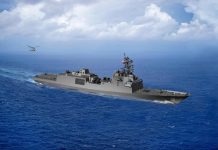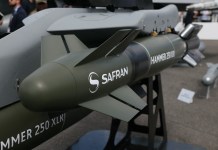Apropos of an unconfirmed news report suggesting that India may procure stealth fighters from an allied nation to meet the IAF’s immediate requirements:
While the report lacks supporting evidence, it appears credible—because it makes logical sense. However, logic is not widely seen as the driving force behind decision-making in India’s Ministry of Defence.
In recent times, defense procurement in India has increasingly been perceived as being guided more by geopolitical signaling than by economic or military imperatives.
Geopolitical Imperatives
Given India’s 360-degree geopolitical balancing act, it may find itself needing to procure, more likely lease, F-35A fighters to preserve U.S. goodwill and, in turn, secure continued Russian cooperation on the Su-30MKI upgrade program.
Without such a balancing gesture, India could risk facing punitive tariffs and sanctions from “Shylock Sam.”
However, an F-35A deal would likely come with strings attached—most notably, a U.S. demand that India abandon its Russian S-400 air defense systems in favor of the American THAAD.
Unfortunately, India lacks the fiscal bandwidth to field THAAD batteries across its vast borders. Recently, while speaking at a convention and addressing delays in HAL’s delivery of the LCA Mk-1A, the IAF Chief quoted a dialogue from a Salman Khan film.
“Ek baar jo humne commit kiya hai, fir main apne aap ki bhi nahi sunta.” (“Once I commit to something, I don’t even listen to myself after that.”)
Asked to blow a gaping hole in India’s air defense coverage just to host leased F-35As, the IAF Chief would not be able to summon a Salman Khan quote to express his frustration.
Now, let’s assume that sensing resistance from a cornered India, Washington has graciously recused itself from the stealth fighter equation and tacitly permitted New Delhi to procure Su-57s from Russia instead.
Not The Su-57
I doubt the IAF will go for the Su-57 outright.
The IAF’s requirement isn’t just for a stealth fighter—it is specifically for a dual-seat, twin-engine stealth fighter!
It’s worth recalling that the Fifth Generation Fighter Aircraft (FGFA), which India and Russia once planned to co-develop, was envisioned as a two-seat variant of the Su-57. However, India opted out of the FGFA project, citing critical shortcomings—namely, the aircraft’s lack of essential fifth-generation features, such as supercruise, and its unproven operational capability.
That said, India never completely closed the door. While it suspended participation in the FGFA project, it left the option open to procure the aircraft at a later stage.
In July 2018, then-Defence Minister Nirmala Sitharaman told Business Standard, “In February, it was conveyed to the Russians that they could go ahead with developing the fighter without us. But the option remains, and we could well go back at a later stage and ask to buy the fighter.”
A year later, in July 2019, the Chief of Air Staff, Air Chief Marshal B.S. Dhanoa, told Krasnaya Zvezda, the official newspaper of the Russian Armed Forces, that India would make a decision on the Su-57 after seeing it in action and after Russia showcases the aircraft in India.
Since then, the Su-57 has been operationally deployed in conflict zones, and according to both Russian and Western reports, its performance has been credible. Furthermore, concerns over the lack of supercruise capability are being addressed. The aircraft’s second-stage (fifth-generation) engine, known as Izdeliye 30, is currently undergoing flight testing. Su-57s delivered from the mid-2020s onward are expected to be powered by this engine, while earlier units use an interim fourth-generation powerplant.
Also, Russia showcased the aircraft in Bengaluru during Aero India 2025.
In short, many of the IAF’s earlier concerns regarding the Su-57’s operational capability and performance envelope—particularly supercruise—are now being addressed.

The Dual Seat Option
In June 2021, Russia’s Deputy Prime Minister Yuri Borisov discussed plans to develop a dual-seat variant of the Su-57, which would enhance the aircraft’s versatility. Also, the aircraft would be more attractive to foreign customers, he said.
In November 2023, Russia’s United Aircraft Corporation published a patent for a Multifunctional two-seat stealth aircraft, which was easily recognizable as the fifth-generation heavy fighter Su-57.
It’s interesting to note that at no stage did the Russian Aerospace Forces show any interest in a two-seat variant of the Su-57. Russia considered developing a two-seat variant only to meet FGFA requirements.
Why A Two-Seat Variant Makes A Difference?
The announcement and patenting of a two-seat Su-57 variant marked a strategic pivot intended to appeal to the IAF for several reasons:
Ease of Pilot Training: A two-seat configuration allows easier transition and training for pilots, especially critical for complex fifth-generation systems. The IAF has always valued twin-seat trainers like the Su-30MKI.
Enhanced Mission Management: A second crew member would ease the operational workload by managing complex systems, data fusion, and electronic warfare operations. As roles for 5th-gen fighters expand into network-centric warfare, this becomes increasingly vital.
Drone Mothership Capability: The Su-57 two-seater is reportedly designed to control UAVs like the S-70 Okhotnik. The ability to command unmanned wingmen while operating in contested airspace adds a force multiplier dimension, aligning with the IAF’s future combat doctrine.
Combat Command Post: According to the Russian patent, the two-seater Su-57 can act as an airborne command center for mixed aircraft groups—ideal for integrating Su-30MKIs, Rafales, and future indigenous drones in a combat network.
Expanded Strike Capability: With one pilot focused on flying and the other on weapons systems, the Su-57 becomes a more capable deep strike aircraft. This could be crucial for the IAF’s need to penetrate hostile airspace protected by advanced SAM systems.
The Overall Logic For Dual-Seat Su-57 Procurement
India’s requirement for a fifth-generation fighter aircraft (FGFA) is both urgent and specific. The Indian Air Force (IAF), having withdrawn from the original Indo-Russian Fifth Generation Fighter Aircraft (FGFA) program in 2018, has since closely monitored the evolution of Russia’s Su-57.
Recent disclosures and patents suggest Russia is developing a two-seat variant of the Su-57—a development that could realign India’s interest toward the platform.
India’s original involvement in the FGFA program, based on the Su-57 (then PAK FA), was driven by the desire for co-development, industrial participation, and access to fifth-generation technology.
However, concerns about cost, capability gaps (especially stealth and supercruise), and lack of clarity over work share led to India’s exit in 2018. Despite this, Indian officials kept the door open for a future acquisition, contingent on the maturity of the platform.
In the years since, Russia has continued to develop the Su-57, operationalizing it with its own air force and introducing export versions like the Su-57E. Recent advances, including the development of the second-stage Izdeliye 30 engine and reports of successful deployment in Syria and Ukraine, have improved the fighter’s credibility.
Industrial & Strategic Rationale
India’s own AMCA fifth-generation fighter is under development but not expected to enter service before 2035. The Su-57 two-seater offers a strategic interim solution without compromising long-term indigenous goals.
Moreover, Russia may offer industrial participation as part of a larger defense cooperation framework. This could include licensed assembly, MRO facilities, and possible avionics customization, appealing to both the IAF and the Indian industry.
The IAF is facing delays in acquiring 114 multi-role fighters under the MRFA program. Acquiring a small batch (approximately 18-24) of twin-seat Su-57s could serve as a stopgap, providing advanced capabilities while the MRFA and AMCA mature.
- Vijainder K Thakur is a retired IAF Jaguar pilot, author, software architect, entrepreneur, and military analyst.
- VIEWS PERSONAL OF THE AUTHOR
- Follow the author @vkthakur




